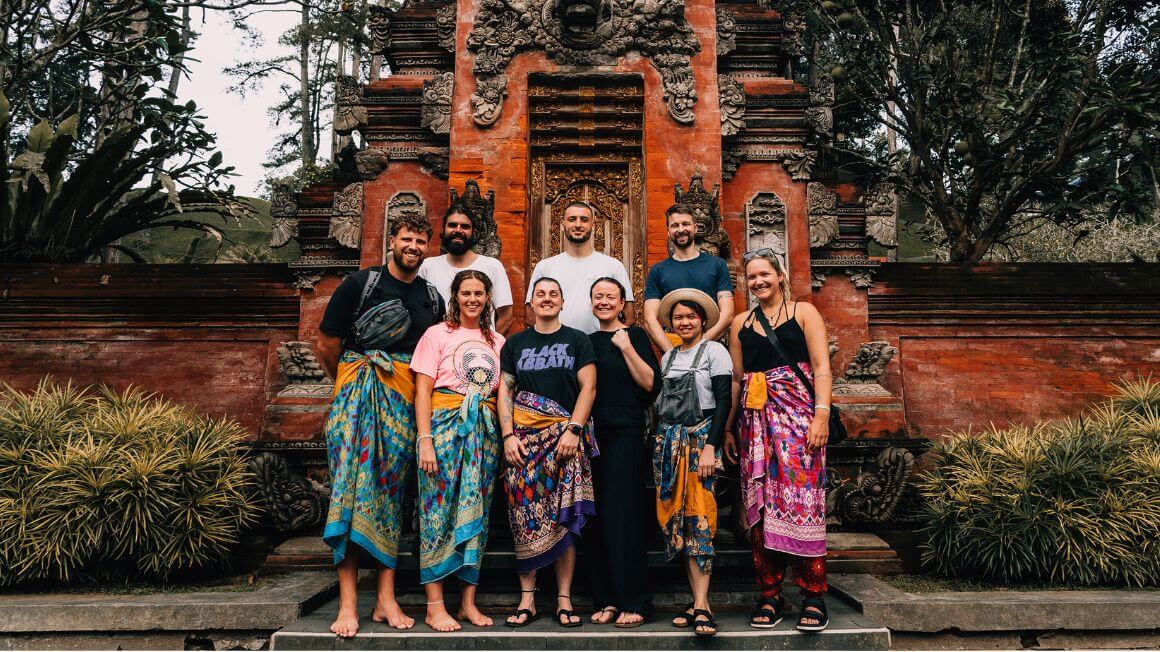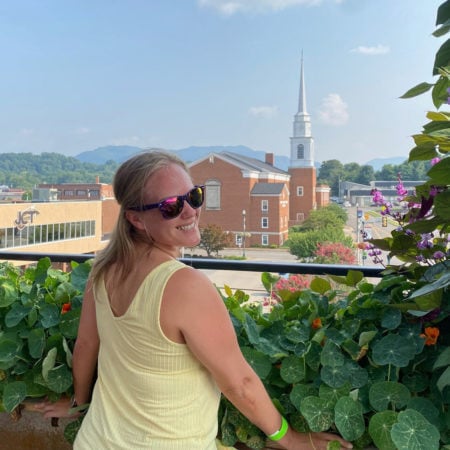The Broke Backpacker is supported by you. Clicking through our links may earn us a small affiliate commission, and that's what allows us to keep producing free content 🙂 Learn more.
Feeling up for a Costa Rican adventure?
Solid choice! Prepare for the captivating beauty of the Pacific coast, lush beaches, to explore national parks, and encounter an array of fascinating wildlife. Costa Rica truly delivers the goods when it comes to both relaxation and heart-pumping adventure.
Now, let’s talk safety. Yeah, you might have come across some scary stories about violent crime and high murder rates, and it can be hard to hear such tales. It’s like there’s a whole other side to Costa Rica that’s not so picture-perfect, and it can be a bit of a hard truth, right?
So, you’re probably wondering,
” Is Costa Rica SAFE to Visit? “
Fear not, my broke backpacker friend, for I’ve got your back! I’ve put together a comprehensive guide packed with invaluable tips and tricks to ensure your trip is as safe as can be.
Let’s dive in!
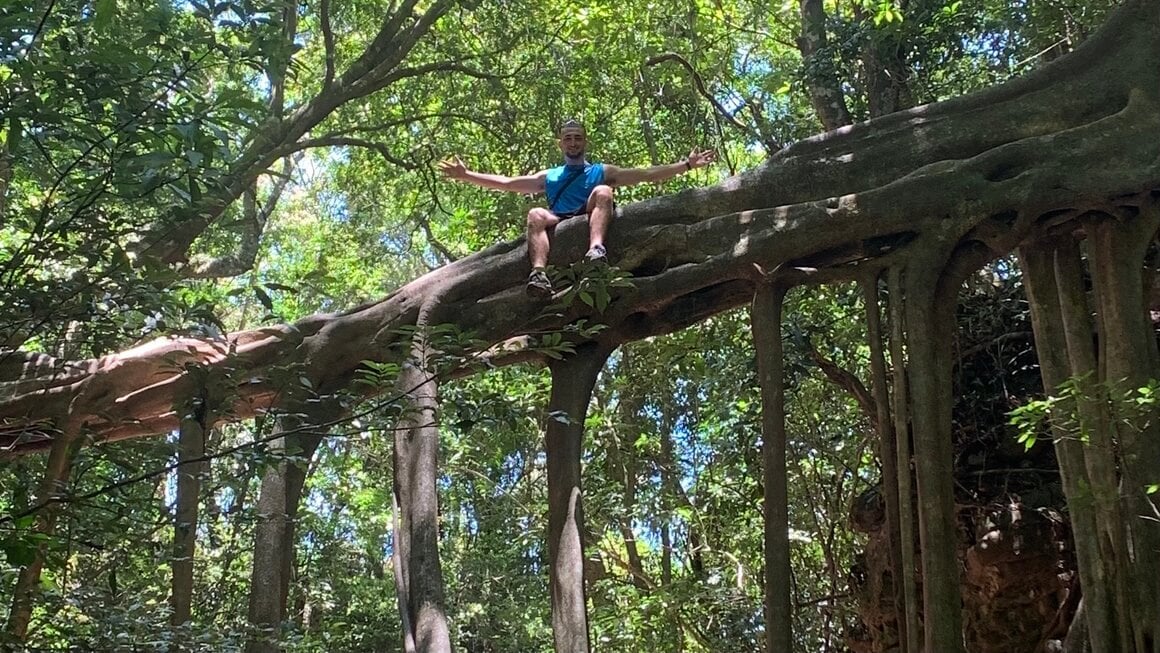
Photo: @joemiddlehurst
The Broke Backpacker is supported by you. Clicking through our links may earn us a small affiliate commission, and that's what allows us to keep producing free content 🙂 Learn more.
There is no such thing as a perfect safety guide, as things change quickly. The question of “Is Costa Rica Safe?” will ALWAYS have a different answer depending on who you ask.
The information in this safety guide was accurate at the time of writing. If you use our guide, do your own research, and practice common sense, you will probably have a wonderful and safe trip to Costa Rica.
If you see any outdated information, we would really appreciate it if you could reach out in the comments below. Otherwise, stay safe friends!
Updated December 2023

Unlock Our GREATEST Travel Secrets!
Sign up for our newsletter and get the best travel tips delivered right to your inbox.
- Is Costa Rica Safe Right Now?
- Costa Rica Travel Insurance
- Safest Places to Visit in Costa Rica
- 19 Top Safety Tips for Travelling to Costa Rica
- Is Costa Rica safe to travel alone?
- Is Costa Rica safe for solo female travelers?
- Where to Start Your Travels in Costa Rica
- Is Costa Rica safe to travel for families?
- Getting around Costa Rica Safely
- Crime in Costa Rica
- What to Pack For Your Costa Rica Trip
- FAQs on staying safe in Costa Rica
- So, Is Costa Rica Safe?
- Buy Us a Coffee!
Is Costa Rica Safe Right Now?
While the country is home to certain issues, yes, traveling to Costa Rica is generally safe. Costa Rica had a total of 2,443,531 tourist arrivals last 2023 as stated by Instituto Costarricense de Turismo. Majority of travellers had no reported issue of their visit.
You may be surprised to know that Costa Rica is actually one of the most stable Latin American countries. Murder rates are significantly lower than most of its neighbors, and no army (abolished in 1949!) means funding goes to better things – like amazing healthcare.
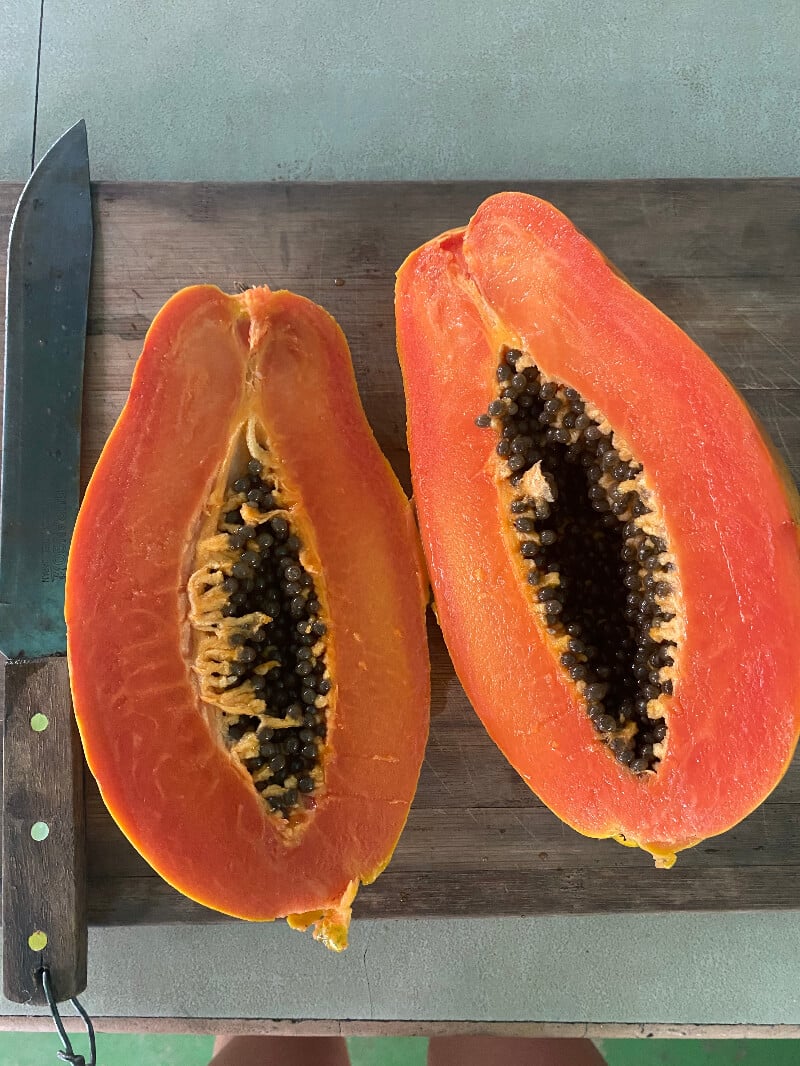
With tourism contributing majorly to the country’s GDP, tourist dollars go some way to eliminate poverty (albeit slowly). The government is focused on making the country accessible and comfortable for tourists.
Sadly, robberies are reasonably common against tourists, and there is some level of gang-related violence, especially in larger cities.
On the whole, visiting costa rica can be trouble-free, and most tourists have a great (if not awesome) time. Costa Rica is an exceptional destination and one of the safest countries in Central America.
Like a variety of tropical Island nations, Costa Rica is subject to its fair share of natural disasters, especially hurricanes. Knowing what to do in these situations could be essential for making sure your visit is safe.
Check out our detailed where to stay guide for Costa Rica so you can start your trip right!
Costa Rica Travel Insurance
True Tale – While embarking on my epic solo adventure in Costa Rica, fate had a surprise in store for me. Picture this: me, cruising on my trusty moped, when suddenly disaster struck, and I found myself tangled up in a crash. I was whisked away to a foreign hospital. But here’s the twist: thanks to the genius decision of securing travel insurance, I was spared the agonizing headache of medical bills in a land far from home. Talk about a lifesaver!
ALWAYS sort out your backpacker insurance before your trip. There’s plenty to choose from in that department, but a good place to start is Safety Wing.
They offer month-to-month payments, no lock-in contracts, and require absolutely no itineraries: that’s the exact kind of insurance long-term travellers and digital nomads need.
SafetyWing is cheap, easy, and admin-free: just sign up lickety-split so you can get back to it!
Click the button below to learn more about SafetyWing’s setup or read our insider review for the full tasty scoop.
Safest Places to Visit in Costa Rica
Costa Rica is a massive tourist destination and overall pretty safe. However, there are some areas that are sketchier than others. We’ve listed Costa Rica’s best places to stay below.
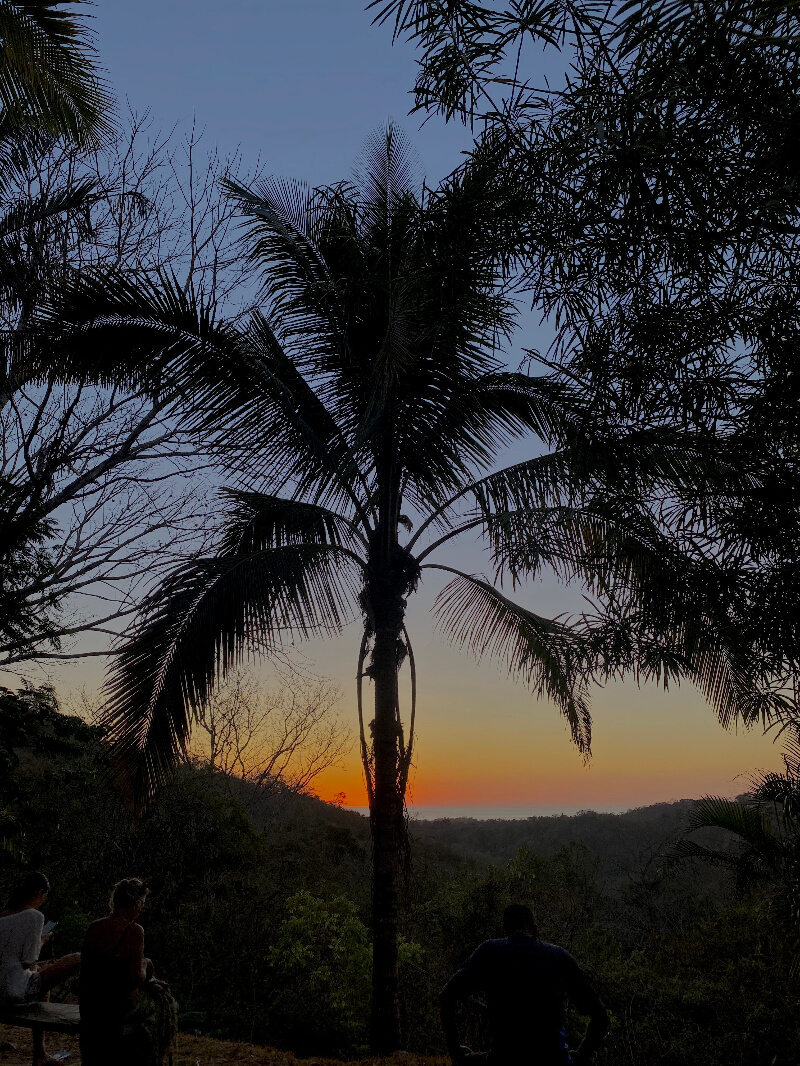
- Tamarindo: Tamarindo is an incredible Pacific coast beach town that is packed with everything you wanted from Costa Rica! It has beautiful beaches, a wild nightlife, and is actually a huge hub for surfers. While Tamarindo is definitely a popular destination to visit, it doesn’t attract as many tourists as other cities, so the safety level is still quite high. There are still some great beach houses though.
- Drake Bay: Drake Bay, also called Bahía Drake, sits on the coast in the southwest of Costa Rica. This city is a top choice for families! It is a remote village, not a crazy tourist hub, and is, therefore, one of the safest areas in Costa Rica. That means that you and your family won’t be fighting for a place to put your beach towel down! The main beach of Drake Bay is called Playa Colorada, which has a handful of restaurants and warm, peaceful water!
- Puerto Viejo: Puerto Viejo de Talamanca sits in the southeast of Costa Rica. It’s right on the gorgeous Caribbean coast and is renowned for the black sand beach and epic surf break! With awesome mangroves and close proximity to some of Costa Rica’s most epic national parks, this is a hard place to beat.
Places to Avoid in Costa Rica
As we’ve mentioned before, not everywhere in Costa Rica is a paradise. While it’s always smart to keep your eyes open and stay aware of your surroundings, the following areas are better avoided than explored.
- Areas in San José: While San José is Costa Rica’s most popular tourist city, there are areas that you should avoid. These include any sort of parks at night. Stay away from Los Guido, Desamparados, Pavas, La Carpio, Leon XIII, the El Carmen neighborhood in Cartago, and the “El Infiernillo,” (little hell) sector of Alajuela.
- Quepos (gateway): Quite a few robberies have been happening in Quepos, a small town that acts as the gateway to the Manuel Antonio National Park. If possible try to stay away or just keep your eyes open.
- Limon City: This port city is generally kept away from tourists and ex-pats. With one of the highest rates of organized crime and drug trafficking in the country, it’s better to give this city a miss. Especially La Cieneguita.
- Santa Rosa de Pocosol, San Carlos: Boasting a high concentration of Nicaraguans, even humanitarian workers have been threatened at knife point. Try and avoid this area.
There is a large rift between local Costa Rican society and the tourism industry. While tourism is great for some, it has been cited as a driver of high inflation and higher costs of living. Locals have been priced out of certain areas.
There is consequently a mixed view of tourists, and it is generally safer to stay within well-known tourist zones than to explore local districts.
Quick tip: Plan everything in advance!
Best Costa Rica Tours: Check out the coolest tours in Costa Rica
Best Places to Stay in Costa Rica: Check out top rated hotels and hostels in Costa Rica
Best Transport in Costa Rica: Book the best transport in Costa Rica
Keeping your money safe in Costa Rica
One of the most common things to happen to you whilst travelling is losing your money. And let’s face it: the most annoying way for this to actually occur is when it’s stolen from you.
Petty crime is pretty much a problem all over the world.The best solution? Get a money belt.

Stash your cash safely with this money belt. It will keep your valuables safely concealed, no matter where you go.
It looks exactly like a normal belt except for a SECRET interior pocket perfectly designed to hide a wad of cash, a passport photocopy or anything else you may wish to hide. Never get caught with your pants down again! (Unless you want to…)
Hide Yo’ Money!
Whilst Costa Rica is generally safe, there is always more you can do to make sure you’re staying safe. Here are a few top tips for staying safe in Costa Rica.
- Inquire with the staff at the hostel/hotel you’re staying at – they’ll know best about the area.
- Make friends – exploring urban areas with a group of travelers deters would-be robbers.
- Don’t walk alone at night – avoid streets that look sketchy…
- Take a taxi instead of walking at night. – remember that licensed taxis are red (or orange). Anything else is illegal and risky
- Avoid people that want to ‘help’ with your bags – this is a scam.
- Always keep an emergency stash of cash – Never keep all your cards/ currency in one place. And hide it all from thieves with a hidden money belt.
- Split up your cash strategically – don’t put one huge wad of bills in your luggage!
- Carry a small amount of cash when you go out – if something happens it’s a small loss. Using a money belt is an excellent way to hide cash.
- Don’t wear expensive accessories – seeming rich makes you a target for thieves.
- You HAVE to carry your passport – but avoid losing it by copying it (ID page + Costa Rica visa) instead.
- Don’t hang your bag or purse on the back of your chair – this is easy picking for a thief.
- Don’t leave your bags unattended at the beach – this is a rookie-level mistake.
- Look busy at bus stations – looking lost is gold dust for scammers wanting a ‘tip’ for helping you.
- Don’t use the overhead lockers on buses – get a ticket for the luggage compartment under the bus.
- Use a flashlight or backpacking headlamp when walking at night in rural areas – you don’t want to step on something bitey!
- Take a good medical kit with you – you never know when you might need it!
- Speaking of which, don’t forget mosquito repellent! Costa Rican mozzies are relentless
- Stay away from drugs – it’s really not worth getting yourself mixed up in the gangs related to them. You’re not making the country any better by buying them.
- Know what to pack for Costa Rica – burning sun, annoying mosquitos… you have to be prepared!
Traveling smart is always the key to making sure your trips run smoothly, and there is no excuse for not doing the same in Costa Rica. That said, there is no point in ruining your trip by constantly worrying.
Keeping a balance between staying safe and having fun is the key to any top adventure!

Combination Padlocks
It doesn’t get more essential than this! Not only do they allow you to lock up your backpack wherever and whenever, but they’ll also come in handy if you show up to a room without a lock. The combination style means you don’t have to worry about losing a small key either!

Apple Airtags
This really might be one of the best products Apple has ever made – the peace of mind it will give you when you inevitably have to check a bag is worth the price tag. I’ve found them to be super helpful and reliable, and you can put them in so many different things

Samsung Galaxy Smart Tags
The same epic concept, except for Androids
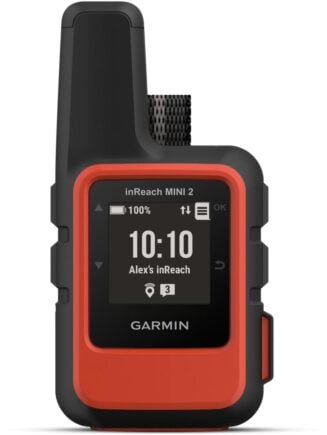
Garmin inReach Mini 2
This little satellite communication device is a must if you plan to get off the beaten path. It allows you to stay in touch with family and friends even if there’s no cell service, AND it has a SOS feature that can be activated anywhere. It even gives weather updates, a literal lifesaver when off grid.
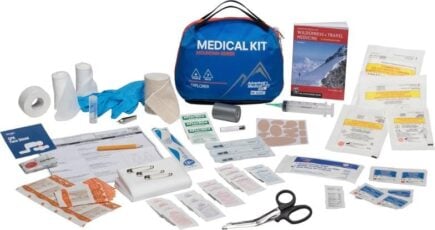
First Aid Kit
A good first aid kit should always be on your packing list, even if you’re just headed to a resort. It’s good to fill it with essential medicines as well as equipment, you never know when you’ll be caught out!

Ever thought about doing a retreat whilst travelling?
We recommend BookRetreats as your one stop-shop to finding specialised retreats focussed on everything from Yoga to fitness, plant medicine and how to be a better writer. Unplug, de-stress, and recharge.
Find a Retreat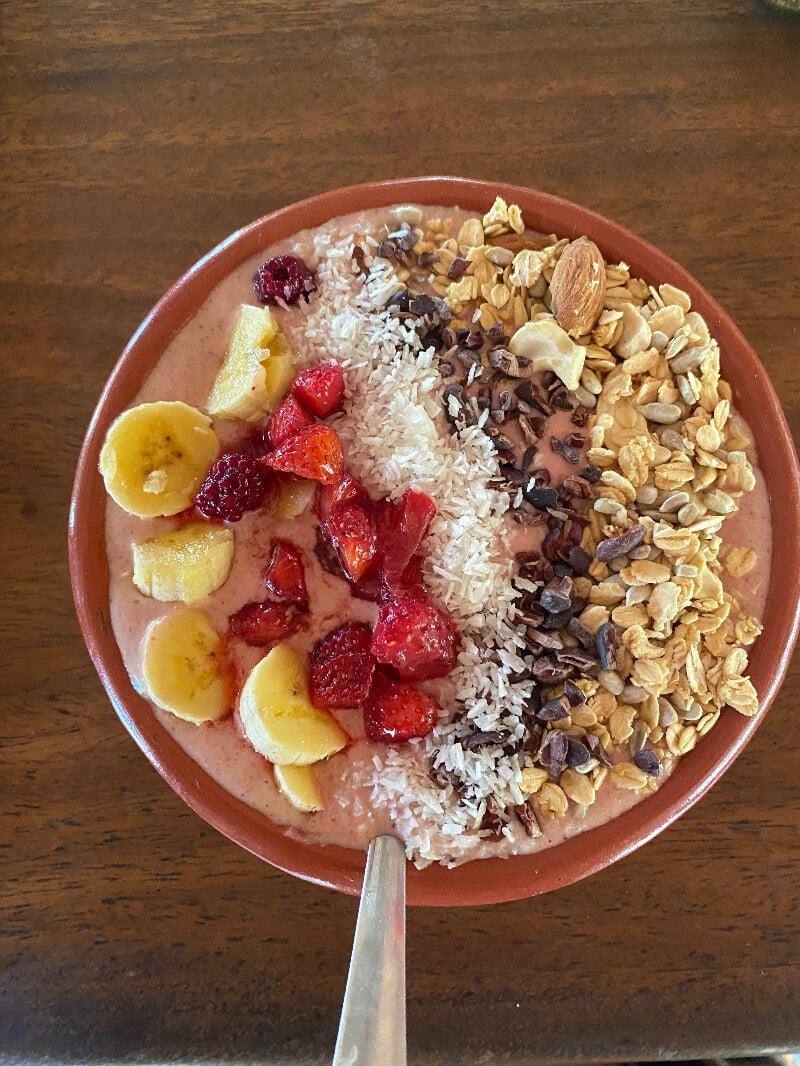
Traveling in Costa Rica by yourself is totally doable and is one of the best ways to experience the amazing country!
Sure, it may be easy but that doesn’t mean it’s a breeze. Here are a few things you can bear in mind to make sure you optimize the safety-fun trade-off.
- Learn some Spanish. You’re in a Spanish-speaking country after all and it makes traversing the bus network much easier. Bus drivers aren’t famed for their English either. You can actually enroll in Spanish classes for a couple of days too.
- You’ll most likely want to meet other people on your travels, right? So unless you’re totally into your own company, then head to destinations where other travelers congregate. Some of the better places for solo travelers in Costa Rica are Santa Teresa, Nosara, Puerto Viejo, and Tamarindo.
- And a top tip for beating the solo traveling blues is just to get out and about – new experiences and people will never be too far away.
- Stay at one of Costa Rica’s hostels – it’s probably one of the best ways to get to know like-minded travelers and exchange stories and travel tips. Even if you want to continue traveling alone, it might benefit your safety!
- Go Scuba Diving with a reputable company and with proper training. It’s not to be missed so make sure you feel confident in your skills and companions when you hit the reefs.
Is Costa Rica safe for solo female travelers?
Is it safe to vacation in Costa Rica for women? Unfortunately travelling solo female can often mean you have to be extra careful.
Here are some crucial things to keep in mind when you’re out in Costa Rica!
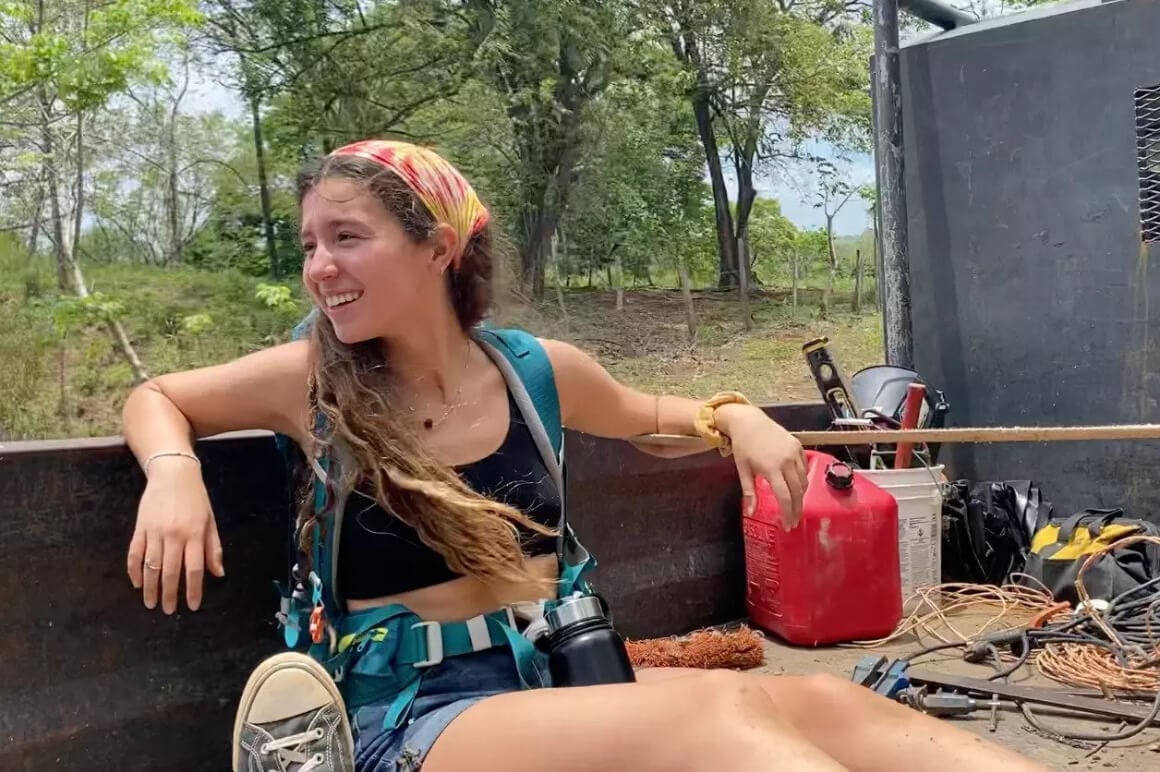
Photo: Amanda Draper
- Be confident, even if you don’t feel like it. Looking confused and lost is a good way to attract unwanted attention – anywhere in the world. If you’re really lost, walk confidently (even if you have no clue where you are) to somewhere that looks safe – a shop, a library, etc. – and find a member of staff to ask for help.
- That’s another thing: don’t be afraid to be direct and ask for help or directions. This will most likely be better than accepting help from someone who initiates the conservation with you.
- Avoid walking alone at night. Get a licensed taxi home or walk with a big group of friends from your hostel, but don’t walk home alone, even if the distance is short.
- Once you arrive in Costa Rica, make friends – women more than men are often targeted by criminals, and having a good crew with you helps to scare away attackers.
- Look at what the local women your age are doing – what they’re dressed like, how they’re behaving.
- Cat calls do happen. If you don’t want that kind of attention, ignore them and move on.
- Know the emergency numbers! Seems simple but it’s easily neglected. Keep them on your phone at the top of the list.
- Let someone know where you’re going – Even if it’s just the staff at the hostel or a friend at home – it’s necessary.
You can do it!!! My first solo travel was to Costa Rica, and as a female solo traveler, I felt safe and on top of the world. Solo traveling is empowering and teaches you so much about the world around you.
Where to Start Your Travels in Costa Rica
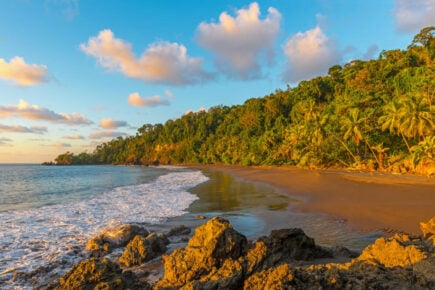
Tamarindo
Tamarindo is known for its stunning beaches and crazy nightlife. It’s also a paradise for surfers.
Is Costa Rica safe to travel for families?
Costa Rica is a fun-packed place and a total playground for any adventure-loving family out there.
national parks and family-friendly beaches are great fun for you and your kids. Ask locals about where is safest to swim: riptides can be deadly. Go with a guide on hikes. They’ll spot dangerous wildlife way before you do.
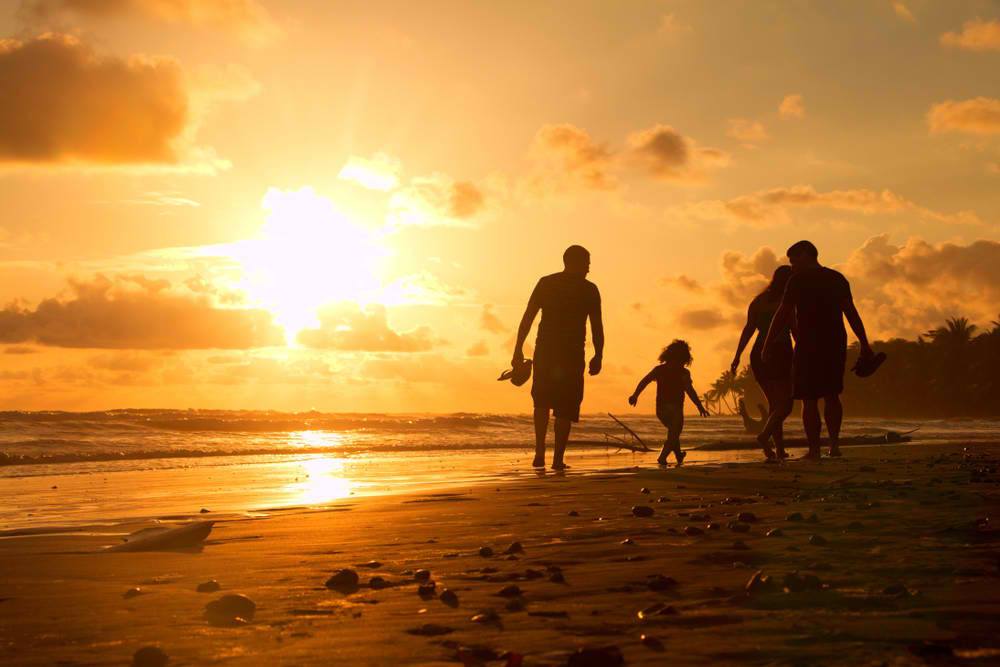
Like anywhere, traveling with kids necessarily demands more of a safety-conscious approach. You can’t galavant around as you can as a solo adult. Remember that it is wayyy less stressful to book in advance, and to plan your trip carefully.
With your attention on the kids, you are more likely to be a target for petty crime, and as a family on holiday, your perceived financial status is usually quite high. Take care of your stuff!

A new country, a new contract, a new piece of plastic – booooring. Instead, buy an eSIM!
Jetpac eSIMs work just like an app: you download it, pick your plan, and BOOM! You’re connected the minute you land. It’s that easy.
Read about how e-Sims work or click below to see one of the top eSIM providers on the market and ditch the plastic.
Grab an eSIM!Getting around Costa Rica Safely
Costa Rica has a strong bus system, where the destinations are posted in the front window. Hiring cars is possible too, and quite a strong idea considering some roads and destinations can be relatively remote.
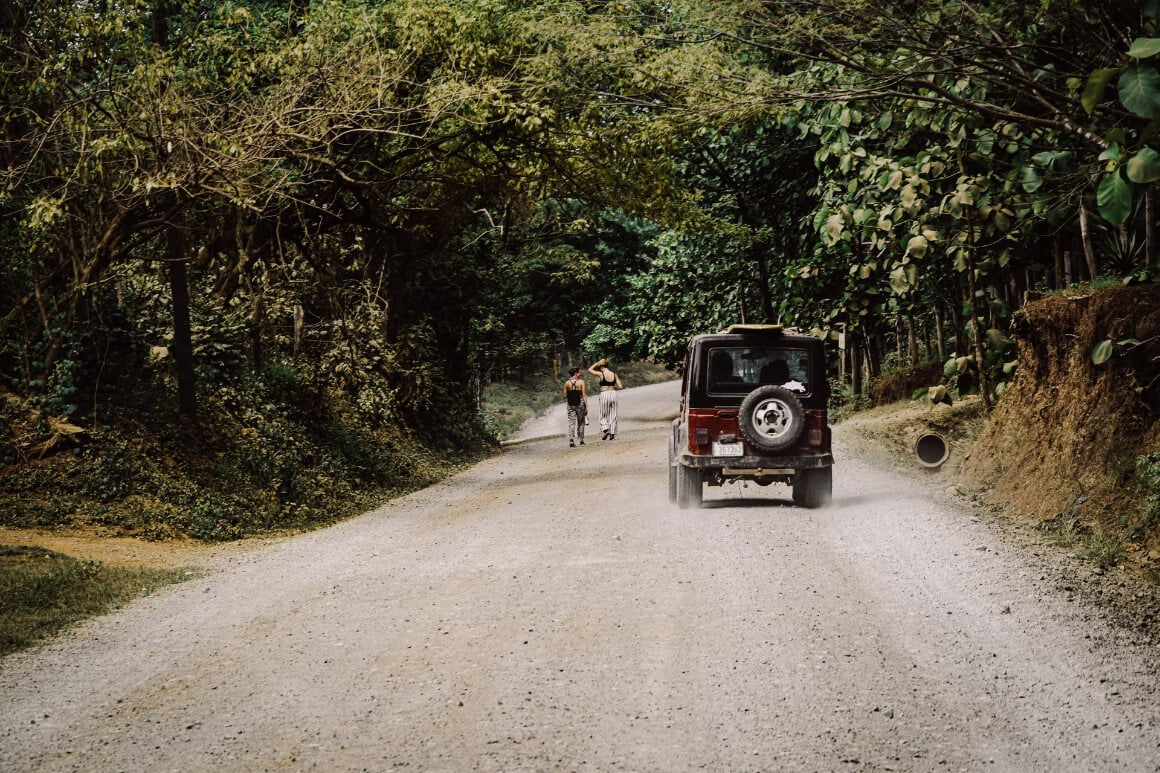
If you’re going to catch a bus from San José to anywhere else during holiday time you’re going to have to book ahead of time at a bus station. Again, basic Spanish would be helpful.
Theft from overhead racks on buses is actually a little rampant, so if you are traveling by public transport, either keep your stuff within reach or use the under-bus storage.
Are taxis safe in Costa Rica? My take is yes. You can pick up taxis pretty easily from major cities, and there is usually a taxi stand to be found. Taxis are a mix of regulated taxis, and piratas (pirate taxis). Despite the ominous name, these are relatively safe, although you may be asked to pretend to know the driver if pulled over.
Crime in Costa Rica
Costa Rica is currently a level 2 rated country, according to the U.S. travel authorities. Robberies are a particularly common and nasty form of violent crime that is prevalent in the country, and Costa Rica has a murder rate of 11.19 per 100 000 (2020). This is comparable to the rate of Grenada, Namibia, and Suriname.
Costa Rican petty crime is worth watching out for as a tourist. Easy opportunities to steal possessions are taken, so just be smart about where you leave certain high-value items. There have been numerous break-ins to tourist vehicles, so be sure valuables are hidden if leaving them inside a vehicle.
Using your common sense will help you avoid a large quantity of trouble in Costa Rica, especially when going out, and walking at night.
Laws in Costa Rica
Costa Rican laws are generally pretty standard, but you should avoid removing architectural objects, and local fauna. If you are discovered on exit you could be subject to some serious payback.
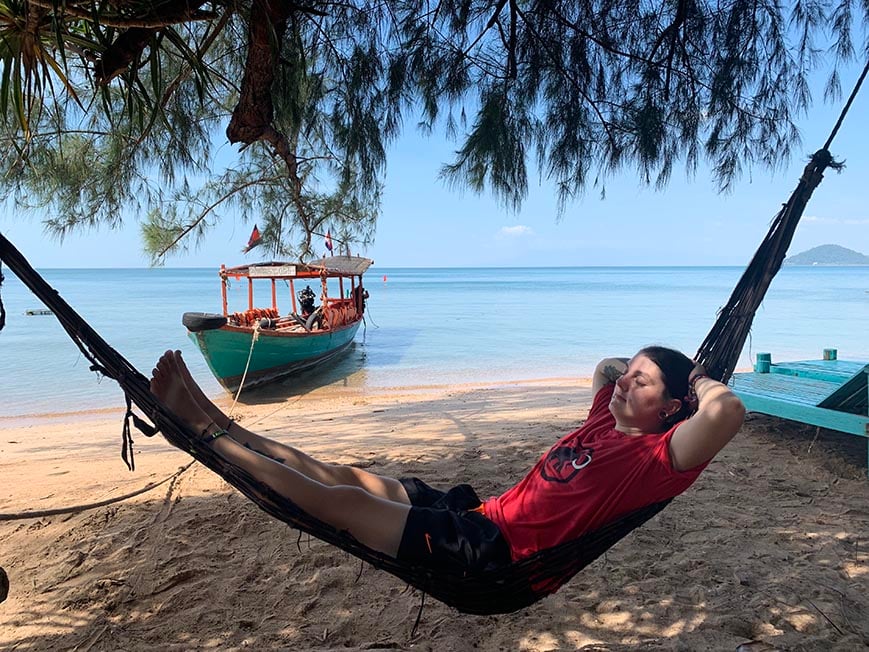
Image: Nic Hilditch-Short
What to Pack For Your Costa Rica Trip
Everyone’s packing list is going to look a little different, but here are a few things I would never want to travel to Costa Rica without…
Hanging Laundry Bag
Trust us, this is an absolute game changer. Super compact, a hanging mesh laundry bag stops your dirty clothes from stinking, you don’t know how much you need one of these… so just get it, thank us later.

Head Torch
A decent head torch could save your life. If you want to explore caves, unlit temples, or simply find your way to the bathroom during a blackout, a headtorch is a must.

SIM card
Jetpac stands as a premier eSIM service provider, catering specifically to the mobile internet needs of travellers.

Monopoly Deal
Forget about Poker! Monopoly Deal is the single best travel card game that we have ever played. Works with 2-5 players and guarantees happy days.
Money Belt
This is a regular looking belt with a concealed pocket on the inside – you can hide up to twenty notes inside and wear it through airport scanners without it setting them off.
FAQs on staying safe in Costa Rica
For a travel destination like Costa Rica, there are lots of different things you have to consider when it comes to safety. We’ve listed the most common question, answers, and facts to make your trip as easy as possible.
So, Is Costa Rica Safe?
Yes, traveling to Costa Rica is safe. Very safe if you’re using your common sense. A wealth of history, crazy good food, and literally amazing nature make it perfect for many different people. And that’s not even mentioning its stunning beaches, which are as popular for sunbathers as they are for surfers.
There are things to bear in mind, of course – taxis can be fraudulent, female travelers should exercise caution, and pickpockets are common.
Hopefully, this guide will have given you some great tips for staying safe in Costa Rica, so go on, enjoy it! (and don’t forget travel insurance)

Photo: @joemiddlehurst
Looking for more info on traveling to Costa Rica?
- Let me help you choose where to stay in Costa Rica
- Explore with the ultimate peace of mind with top-notch medical evacuation insurance
- Don’t forget to add an epic national park to your itinerary
- Check out my favorite Airbnbs in the centre of all the action
- Plan the rest of your trip with our fantastic backpacking Costa Rica travel guide!
Disclaimer: Safety conditions change all over the world on a daily basis. We do our best to advise but this info may already be out of date. Do your own research. Enjoy your travels!
Buy Us a Coffee!
A couple of you lovely readers suggested we set up a tip jar for direct support as an alternative to booking through our links, since we’ve decided to keep the site ad-free. So here it is!
You can now buy The Broke Backpacker a coffee. If you like and use our content to plan your trips, it’s a much appreciated way to show appreciation 🙂





